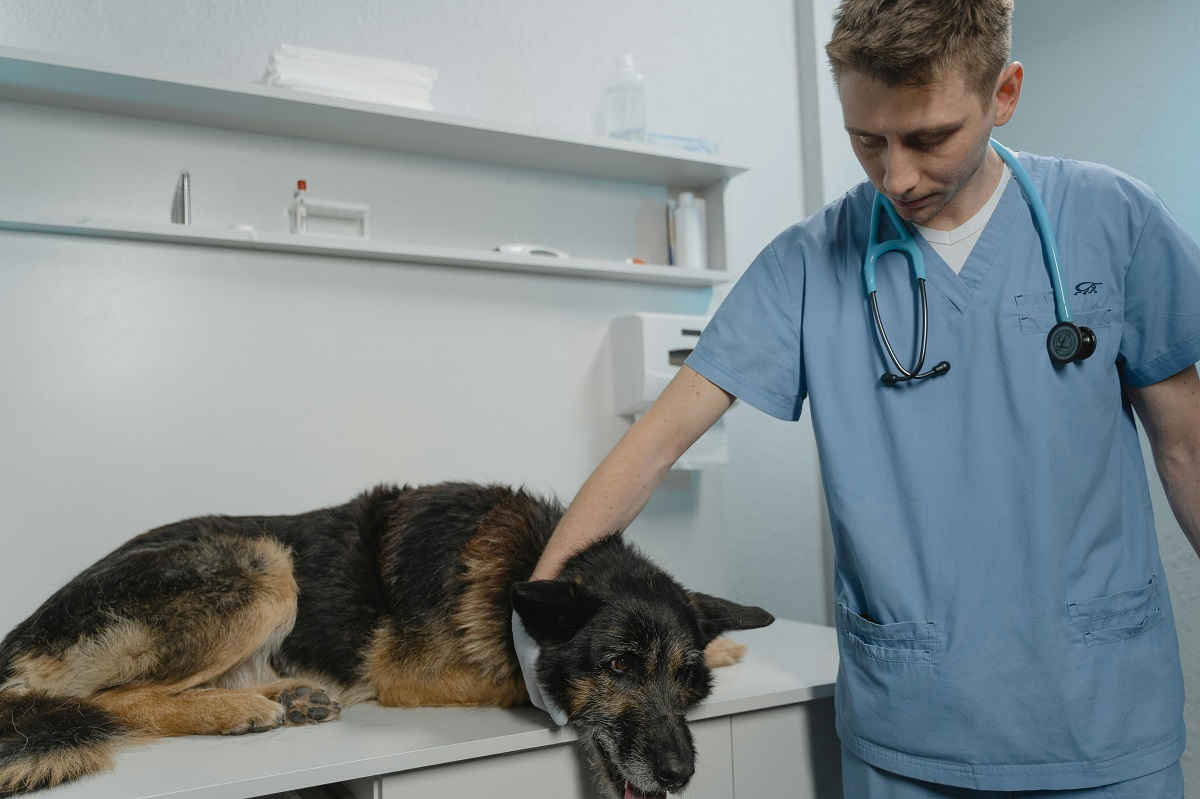
Parvovirus, commonly known as parvo, is one of the most serious and contagious viral illnesses affecting dogs—especially puppies. For pet parents, understanding the stages of parvo can make the difference between life and death. Early detection and prompt treatment can save lives, reduce suffering, and improve recovery outcomes.
This guide breaks down the stages of parvo in dogs, helps you identify early symptoms, and gives pet parents practical tips on what to do at each phase.
What Is Canine Parvovirus (Parvo)?
Canine parvovirus is a highly contagious virus that primarily attacks the gastrointestinal tract and, in some cases, the heart of dogs—especially those that are young, unvaccinated, or immunocompromised.
Key facts:
- The virus spreads through direct contact with an infected dog or contaminated feces, surfaces, bowls, and even clothing.
- Parvo is resistant to many disinfectants and can survive in the environment for months.
- While 90% of dogs with untreated parvovirus do not survive, aggressive treatment offers a much higher chance of survival, with mortality rates dropping to between 5% and 20%.
Why Pet Parents Must Understand the Stages of Parvo
The progression of parvo is rapid and aggressive. Many pet parents don’t notice symptoms until the disease is already advanced. Learning the stages of parvo empowers you to act fast, increasing the chances of a full recovery.
Stage 1: Incubation Period (Days 1–5)
Is my dog already infected but not showing symptoms?
The incubation period is the time between exposure to the parvovirus and the appearance of the first symptoms. This window typically lasts 3 to 5 days, though in some cases it may be up to 7 days.
What’s happening internally:
- The virus enters the body usually through oral contact with contaminated feces, soil, or infected surfaces.
- It begins by replicating in the lymphatic tissues such as the tonsils and lymph nodes.
- From there, it enters the bloodstream and targets rapidly dividing cells—primarily in the bone marrow and intestinal lining.
At this stage, your dog looks completely normal. There are no visible symptoms, and nothing in behavior or appetite may seem off. However, your dog may already be contagious, unknowingly shedding the virus in their feces.
Why this stage matters to pet parents:
- Parvo is often spread unknowingly during this period, especially in communal areas like dog parks or boarding facilities.
- Puppies are especially vulnerable—their immune systems are not fully developed, and many aren’t fully vaccinated yet.
Action steps for pet parents:
- Think exposure: Has your dog recently been near unvaccinated dogs or visited a high-risk area? If yes, consider quarantine.
- Notify your vet immediately if you suspect exposure, even without symptoms.
- Isolate your dog from other pets in the home and avoid public places.
- Use a bleach-based disinfectant (1:30 bleach to water ratio) to clean food bowls, bedding, crate floors, and any surface the dog has contacted.
- Monitor behavior closely. A sudden nap instead of playtime may be the first subtle clue.
Stage 2: Early Symptoms Begin (Days 3–6)
What are the first signs of parvo in dogs?
This is the early clinical stage, when your dog begins to show subtle but critical signs of illness. These may develop gradually over a day or two, and pet parents often mistake them for a mild upset stomach.
Early warning signs include:
- Lethargy: Your dog may seem unmotivated to play or walk. A usually active pup becomes withdrawn.
- Loss of appetite: One skipped meal is not uncommon, but skipping multiple feedings is a red flag.
- Fever or hypothermia: A dog’s normal temperature is around 101–102.5°F. A temperature above 103°F or below 99°F can signal immune distress.
- Mild vomiting: This may be occasional and contain yellow bile at this stage.
Some dogs also experience:
- Tucked tail
- Mild abdominal discomfort
- Subtle changes in posture or gait due to stomach pain
What to do as a pet parent:
- Act immediately. Time is of the essence. Call your vet and describe symptoms.
- Don’t attempt home remedies or online treatments—they can mask symptoms and delay proper care.
- Avoid feeding anything until your vet advises—food and water can worsen vomiting.
- Begin documenting symptoms, times, and frequency to share with your vet.
- Quarantine your dog and begin sanitizing areas even before a diagnosis is confirmed.
Stage 3: Acute Illness (Days 4–10)
What does full-blown parvo look like?
This is the most dangerous and physically taxing stage of the disease. The virus has now compromised the intestinal lining, which leads to severe gastrointestinal damage and opens the door for life-threatening bacterial infections.
Common symptoms during this stage:
- Severe, frequent vomiting: Often yellow, foamy, or mixed with blood.
- Profuse, bloody diarrhea: Extremely foul-smelling and watery, sometimes with mucus.
- Dehydration: Skin stays tented when pinched, dry mouth/gums, sunken eyes.
- Rapid weight loss: Due to fluid loss and lack of food intake.
- Abdominal pain and bloating
- Weakness or collapse
- Pale gums and cool extremities: Indications of poor circulation and shock.
Your dog will likely appear extremely weak, unresponsive, and may struggle to stand or walk.
What veterinary treatment includes:
- IV fluids: Crucial to replace lost fluids and electrolytes.
- Antiemetics: Medications like maropitant or ondansetron to control vomiting.
- Broad-spectrum antibiotics: To fight secondary infections from bacteria entering through the damaged intestines.
- Glucose and potassium supplementation if needed.
- Nutritional support, often via syringe or feeding tube.
Pet parent tips:
- Understand that 24/7 care may be required, especially for small breeds or puppies.
- Ask about in-patient vs. out-patient care options, depending on budget and severity.
- Stay in touch with your vet daily, and ask what symptoms would require emergency re-evaluation.
Stage 4: Crisis or Turning Point (Days 7–12)
Is my dog going to make it through?
This is the make-or-break stage where the immune system either gains control over the virus, or the illness worsens into septic shock, organ failure, or even death.
Signs your dog is stabilizing:
- Vomiting slows or stops
- Stools start to firm up, though they may still contain traces of blood
- Interest in food or water returns
- Gums become pink again, a sign of improving circulation
- Your dog may start wagging their tail or reacting to you again
Signs that require urgent vet re-evaluation:
- Ongoing bloody diarrhea or vomiting
- Complete unresponsiveness or inability to stand
- Rapid breathing or labored chest movements
- Gums that remain pale, gray, or blue
- Seizures or collapse
What pet parents should do:
- Continue medication and fluid regimens exactly as prescribed—do not stop early, even if your dog seems better.
- Limit physical activity—let your dog rest in a quiet, warm area.
- Clean contaminated areas daily and wash hands thoroughly after any contact.
- Be prepared emotionally for either outcome. This stage is difficult but crucial.
Stage 5: Recovery and Aftercare (Days 10–14 and beyond)
What happens after a dog survives parvo?
Surviving parvo is a major milestone, but recovery doesn’t end at discharge. The intestines and immune system remain fragile, and your dog may still be shedding the virus.
What recovery looks like:
- Your dog may sleep more than usual but gradually becomes more active.
- Appetite improves, though they may have a sensitive stomach.
- Stools return to normal consistency over time—first soft, then firm.
- They regain weight slowly and need gentle encouragement to eat and hydrate.
Aftercare essentials:
- Feed a bland, easily digestible diet for at least 1–2 weeks post-recovery (e.g., plain chicken and rice, or prescription GI food).
- Hydration support—make sure your dog drinks frequently; ice cubes or diluted low-sodium broth can help.
- Strict isolation for 14–21 days post-recovery. Your dog is still shedding the virus.
- Disinfect surfaces, toys, and anything your dog touched with diluted bleach solution.
- Consider booster vaccinations and have your vet check for any long-term effects, such as poor growth or gut issues.
FAQs About Parvo for Pet Parents
Can vaccinated dogs get parvo?
Yes, although it’s rare. No vaccine is 100% effective. Puppies not fully through their vaccine series are especially at risk.
How long is a dog contagious after parvo?
Dogs can shed the virus in their feces for up to 10 days after clinical recovery. Keep them isolated during this period.
How can I prevent parvo in the future?
- Vaccinate puppies on schedule (typically at 6, 8, 12, and 16 weeks)
- Avoid dog parks and communal areas until fully vaccinated
- Sanitize shoes, crates, toys, and bedding
- Don’t bring home a new puppy if you’ve had parvo in the home recently
How Vets Diagnose and Treat Parvo
If your vet suspects parvo, they will likely run:
- ELISA test (checks for parvo antigens in stool)
- Blood tests (to monitor white blood cells, hydration, and organ function)
- Imaging in severe cases to assess internal damage
Treatment is supportive, not curative:
- There’s no “cure” for parvo, only aggressive supportive care while the body fights the virus.
Final Thoughts: Stay Alert, Stay Hopeful
The stages of parvo move quickly, but pet parents who act fast have the power to make a huge difference. If your dog shows any early signs, don’t wait. Call your vet. Knowing the symptoms and acting swiftly can lead to a full recovery.
Quick Reference: Parvo Stages at a Glance
| Stage | Timeframe | Key Signs | What Pet Parents Should Do |
| Incubation | Days 1–5 | No symptoms | Watch for exposure, isolate, sanitize |
| Early Symptoms | Days 3–6 | Lethargy, fever, appetite loss | Call vet immediately |
| Acute Illness | Days 4–10 | Bloody diarrhea, vomiting | Emergency vet care required |
| Crisis/Turning Point | Days 7–12 | Worsening or improving | Follow vet closely, monitor |
| Recovery | Days 10+ | Appetite, energy return | Aftercare, sanitation, rest |
Resources for Pet Parents
- American Veterinary Medical Association (AVMA): www.avma.org
- Pet Poison Helpline: 1-855-764-7661
- Local veterinary emergency clinic contact list
- Ask your vet about affordable treatment options, including outpatient care and financial assistance programs


